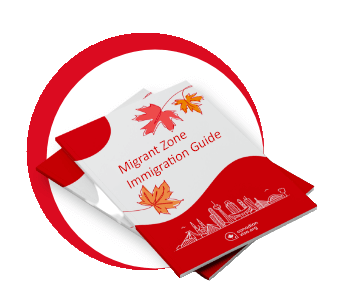Manufacturing in Canada accounts for approximately $174bn in the GDP, more than 10% of the total GDP of the entire country. Thanks to this, 1.7 million jobs are kept and maintained through many of the main manufacturing industries in Canada.
Manufacturing industries themselves have become more industrialized over the years, with higher technologies and innovations brought to the sector with the help of researchers, programmers, engineer and tradespeople.
Some of the main manufacturing industries in Canada in each province are as follows.
Alberta Main Manufacturing Industries
| Industry | % of workforce employed |
|---|---|
| Mining, gas, oil and machinery manufacturing | 9.5 |
| Meat processing | 6.4 |
| Wood paneling manufacturing | 4.3 |
Did you know that Alberta itself is home to 63% of all manufacturing facilities in Canada?
British Columbia Main Manufacturing Industries
| Industry | % of workforce employed |
|---|---|
| Sawmill and wood production | 9.7 |
| Meat processing | 4.6 |
| Wood paneling manufacturing | 3.0 |
Did you know that British Columbia is one of the largest wood production centre in Canada?
Manitoba Main Manufacturing Industries
| Industry | % of workforce employed |
|---|---|
| Meat processing | 13.4 |
| Tractors and agricultural machinery manufacturing | 6.9 |
| Printing | 5.2 |
Did you know that Manitoba is one of the largest producers of wheat farms in Canada accounting for 9.8% of Canada’s production?
New Brunswick Main Manufacturing Industries
| Industry | % of workforce employed |
|---|---|
| Seafood processing | 26.7 |
| Miscellaneous manufacturing | 3.2 |
| Meat processing | 2.7 |
Did you know that New Brunswick produces 11.4% of all of Canada’s seafood needs? The province is known for its shrimp, herring and queen crab catches.
Newfoundland and Labrador Main Manufacturing Industries
| Industry | % of workforce employed |
|---|---|
| Seafood processing | 56.8 |
| Bread production | 1.2 |
| Wood paneling production | 0.9 |
Did you know that Newfoundland and Labrador has some of the largest fishing companies in the world, like the Barry Group Inc and Breakwater Fisheries Ltd that make their home in this province?
Nova Scotia Main Manufacturing Industries
| Industry | % of workforce employed |
|---|---|
| Seafood processing | 21.4 |
| Aerospace manufacturing | 7.0 |
| Ship and boat building | 4.3 |
Did you know that Nova Scotia accounts for 40% of military assets and security operators in Canada?
Ontario Main Manufacturing Industries
| Industry | % of workforce employed |
|---|---|
| Automobile manufacturing | 4.9 |
| Plastic production | 4.2 |
| Printing | 3.4 |
Did you know that Ontario has one of the biggest automobile manufacturing industries, producing 59.3% of all cars in Canada. Ontario is also home to names like Ford, Chrysler, General Motors and Toyota.
Quebec Main Manufacturing Industries
| Industry | % of workforce employed |
|---|---|
| Aerospace manufacturing | 6.5 |
| Meat processing | 3.6 |
| Plastic manufacturing | 3.1 |
Did you know that 23.7% of all aircraft engine and parts are manufactured in Quebec? The international aerospace company Bombardier, Pratt & Whitney Canada and even Bell Helicopter Textron Canada call Quebec home.
Saskatchewan Main Manufacturing Industries
| Industry | % of workforce employed |
|---|---|
| Tractors and agricultural machinery | 18.7 |
| Meat processing | 7.8 |
| Truck, trailer and home manufacturing | 5.0 |
Did you know that Saskatchewan is the farming centre of Canada, which owns a huge 41% of arable land that produces rye, oats, wheat and barley?
Manufacturing Work Shortages in Canada
Because of Canada’s increasing aging population, there has been a increase in manufacturing work shortages in Canada. As a result Canada has been introducing skill development and additional training to its employees in these sectors to help reduce future labor shortages.
Canada has also been trying to balance its skilled workers by giving benefits like:
- Apprenticeship Job Creation Tax Credit;
- Apprenticeship Incentive Grant
- Completion Grant; and
- Canada Apprentice Loan
All these incentives are to help attract more workers to work in Canada, with even more programs and training being created as work shortages increase.




